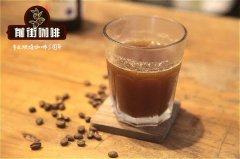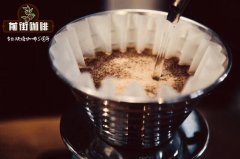What are the characteristics of bourbon coffee?

Professional coffee knowledge exchange more coffee bean information please follow the coffee workshop (Wechat official account cafe_style)
[preface to the type of coffee]
After the early (prehistoric coffee) iron pickup was transplanted to Yemen, the bean shape changed from thin and pointed to round. It was named bourbon in 1715 after France transplanted round beans from Yemeni mocha to the island of Bourbon on the east coast of Africa (renamed Reunion after the French Revolution). Bourbon beans spread to Brazil and Central and South America in 1727, and the British transplanted Yemeni mochas to St. Helena Island (where Napoleon was later imprisoned) in 1732. Bourbon is the winner of the American boutique coffee cup test.
Bourbon, the second species caused by the Typica mutation, is the oldest coffee variety in existence, and the green fruit appears bright red when it is ripe. Compared with the tin card species, the bourbon species has wider leaves and denser growth. although the seed setting is higher than the tin card, the harvest time is also 2 years, which is also a variety with less yield, but it has a high-quality taste, like the sour taste of red wine, and the aftertaste is sweet. Coffee bean granules are large in shape, uniform in size, uniform in color and glossy. In order to facilitate harvesting, farmers will prune coffee trees to no more than 150 centimeters.
[type of coffee: red bourbon]
After the red bourbon general coffee tree blossoms and bears fruit, the color change of the coffee fruit is: green > turn yellowish > turn slightly orange > turn mature red > turn more ripe dark red, so some people also call it [red bourbon], in fact, red bourbon, that is, what we call bourbon species. Bourbon planted at high altitude usually has a better aroma, while the acid is brighter and even tastes like red wine.
[type of coffee: yellow bourbon]
On the other hand, the yellow bourbon species is a hybrid between the bourbon species and other varieties. Because of its low yield and relatively intolerant to wind and rain, it has not been widely planted. However, when planted in high altitude areas, it will have excellent flavor performance, which is more common in recent years. Yellow Bourbon, Huang bourbon, the mature consequence is actually yellow, was first found in Brazil, and now mainly grows in Brazil. It is generally believed that it may have been mutated by a cross between a bourbon with red fruit and a variety of iron pickup with yellow fruit called "Amerelo de Botocatu".
[type of coffee: French missionary bourbon]
In Africa, French missionaries known as Spiritan (from the Holy Spirit) played an important role in the spread of the bourbon species. The first church was founded in Reunion in 1841 and a branch was established in Zanzibar in 1859, while from Zanzibar, a branch was established in Bagamoyo (along the coast of Tanzania, then known as Tanganyika) in 1862, St. Augustine (Kikuyu, Kenya) in 1862, and a branch in Bura (Taita Hills,Kenya) in 1893. The establishment of each chapter was accompanied by the planting of coffee seeds from Reunion.
Seedlings cultivated by Bura in 1899 were brought to another French church in Santa Cruz (near Nairobi), introduced to the Kilimanjaro region of Tanzania in 1900, and distributed seeds to local residents who were willing to grow coffee. This is the origin of the so-called "missionary bourbon". Then the Kent species was introduced in 1920. Therefore, up to now, the coffee in Tanzania is mainly bourbon and Kent.
The following are all bourbon species:
[Brazilian red fruit]
Old bourbon coffee is grown on some estates in the Serrado district of Minas Greais state in southeastern Brazil. The Serrado platform and South Minas in the west of Minas are mostly above 1100 meters above sea level, with rich landforms, obvious dry and wet seasons, great temperature difference between day and night, and rich microclimate, which are suitable for cultivating elegant red bourbon and yellow bourbon. It has naturally become the main producing area of Brazilian boutique coffee.
Baking degree: medium baking
Recommended cooking method: hand flushing
Degree of grinding: 4 (small Fuji R440)
Water temperature: 88 ℃
Filter cup: V60/KONO
Dry fragrance: nuts, cocoa
Palate: low sour, nutty, sweet and mellow chocolate
[Queen of Brazil]
From FazendaRainha (Queen's Manor), the estate covers an area of 280mu and is located in Vale da Grama, an ancient volcanic valley in Brazil. FazendaRainha is owned by the prestigious and respectable coffee family CarvalhoDias family. Since the first Brazilian COE Competition in 1999, CarvalhoDias's four major estates have won awards every year, winning more than 12 times in the past seven years, and even arranged for the champion, 9th, 11th and so on in 2004, many large and small estates in Brazil.
Baking degree: medium baking
Recommended cooking method: hand flushing
Degree of grinding: 4 (small Fuji R440)
Water temperature: 88 ℃
Filter cup: V60/KONO
Dry fragrance: roasted hazelnuts, spices
Flavor: slightly sour fruit, nuts, creamy peanuts, chocolate sweet, mellow thickness.
[Haniyeh, Kenya]
In Kenya, it is often heard that K72 treatment and SL28, SL34 these two varieties. So it is rare for the French missionary Bourbon to be tanned. Chania Estate's unique red volcanic soil, coupled with suitable coffee growth temperature and rainfall, coupled with excellent natural environment, create the unique flavor of French missionary bourbon species in Sika Haniya.
Baking degree: medium baking
Recommended cooking method: hand flushing
Degree of grinding: 3.5 (small Fuji R440)
Water temperature: 90 ℃
Filter cup: V60
Dried fragrance: fermentation, dried fruit, vanilla
Flavor: sipping can drink caramel, vanilla, comprehensive fruit, solid sense of juice, aftertaste of berries, strong jackfruit, coffee flowers, the overall performance of the wild regional flavor of Africa.
In general, bourbon beans [red bourbon] [yellow bourbon] [French missionaries] are similar in flavor, with obvious flavors of dark chocolate, cocoa, nuts and caramel, supple acidity and low bitterness.
Bourbon is planted in different regions, because of the influence of wind and soil factors such as microclimate, soil quality, planting environment and so on, the flavor direction will be slightly different. The pozzolanic soil of Kenya has a high content of phosphoric acid, which makes [French missionaries] have the sour quality of tropical fruit, while continuing the flavor of bourbon, which makes the flavor of this bean more complex. I hope to help you today.
Important Notice :
前街咖啡 FrontStreet Coffee has moved to new addredd:
FrontStreet Coffee Address: 315,Donghua East Road,GuangZhou
Tel:020 38364473
- Prev

Hawaii Kona Coffee Introduction Hawaii Kona Coffee Region Introduction Hawaii Kona Coffee Flavors
Professional coffee knowledge exchange More coffee bean information Please pay attention to coffee workshop (Weixin Official Accounts cafe_style) Hawaii coffee is the only top variety produced in the 50 states of the United States Due to the very small coffee cultivation area on the island, the annual production of coffee beans produced in Hawaii is limited and of good quality. As a result, the price of coffee beans produced in this area will be higher than that in other coffee growing countries.
- Next

How to distinguish between different types of coffee?
Professional coffee knowledge exchange More coffee bean information Please pay attention to coffee workshop (Weixin Official Accounts cafe_style) Bourbon is an ancient coffee type like iron pickup truck. Bourbon: Early (coffee prehistoric) variant of the iron pickup transplanted to Yemen, bean-shaped from lean to rounded. In 1715, France transplanted round beans from Yemen mocha to the waves on the east coast of Africa.
Related
- Beginners will see the "Coffee pull flower" guide!
- What is the difference between ice blog purified milk and ordinary milk coffee?
- Why is the Philippines the largest producer of crops in Liberia?
- For coffee extraction, should the fine powder be retained?
- How does extracted espresso fill pressed powder? How much strength does it take to press the powder?
- How to make jasmine cold extract coffee? Is the jasmine + latte good?
- Will this little toy really make the coffee taste better? How does Lily Drip affect coffee extraction?
- Will the action of slapping the filter cup also affect coffee extraction?
- What's the difference between powder-to-water ratio and powder-to-liquid ratio?
- What is the Ethiopian local species? What does it have to do with Heirloom native species?

